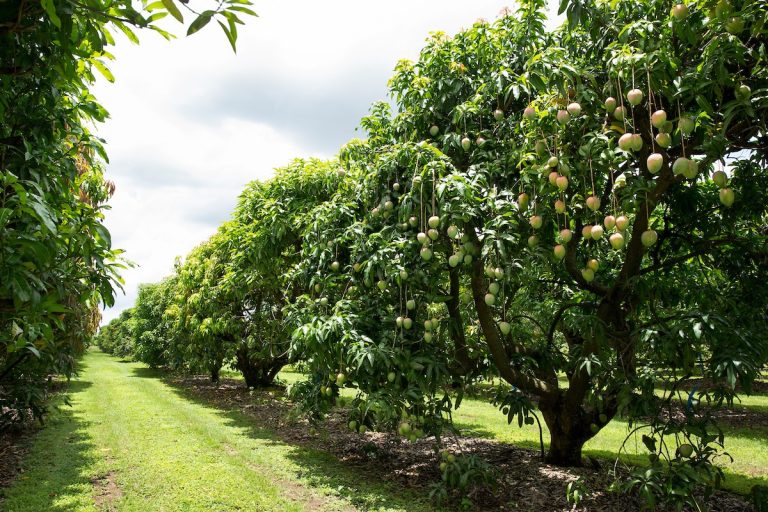
By Clint Thompson
Count the tropical fruit industry as an agricultural sector impacted by climate change. Certain areas in Florida are now home to tropical fruit production. It wasn’t that long ago that the thought of farmers in central Florida producing mangoes and other tropical fruits seemed unthinkable.
Jonathan Crane, University of Florida Institute of Food and Agricultural Sciences (UF/IFAS) professor and tropical fruit crop specialist, discussed this growing trend of tropical fruit production expanding beyond South Florida.
“People have tried all of these crops throughout Florida. The vast majority of it ended up in Miami-Dade County because of the repeated freezing weather, but that’s no longer the case,” Crane said. “Our average nighttime temperatures are significantly warmer than they have been for the past 100 years. The number of freezes, the frequency of freezes and how cold the freezes get has also dramatically decreased, maybe 40% to 50%, depending on your location. A place that got seven or eight freezes 20 years ago is down to one or two now and of shorter duration.”
Be Careful
While central Florida is a potential home to increased tropical fruit production, growers should not expand their farming operations too rapidly.
“I got a call late last year where he said, ‘I’m putting in mangoes.’ ‘I’m putting in 200 acres.’ I say, ‘Where?’ He said in central Florida,” Crane said. “I caution people, the climate is definitely warm, but you could still have a freeze. It only takes one to kill your young trees.
“You need to really think about your site selection. You need to think about what is your strategy to keep these trees warm in the event of a freeze. Once they get 8- to 10-years-old, they’ll be more tolerant. You’ve got to get them there first.”
Temperatures Too Hot
Temperatures have also risen so much that certain tropical fruits are no longer a viable option for South Florida growers.
“If you’re going to grow lychee, I would recommend that you put it in central Florida because it’s too hot here for lychee now. They require temperatures below 60 degrees (Fahrenheit) during the winter, and we just don’t get much of that at all,” Crane said. “Central Florida is going to be more reliable bearing because it requires that in order to flower.”
Passion fruit are similar to lychee with its vulnerability to the extreme hot weather conditions that are prevalent in South Florida.
“We’re now seeing in the past three years, where there’s temperatures, sometimes it lasts three, four, seven days, maybe longer; during June, July and August where the temperatures are excessively high,” Crane said. “I’ve actually in the past three years seen the passion fruit vines stop growing. Passion fruit flowers and fruits on new growth. If it’s not growing, it’s not producing fruit.”










